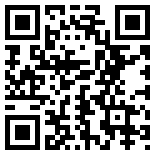德州仪器信号调节器IC扩展了高速接口,同时降低了成本
扫描二维码
随时随地手机看文章

Signal Conditioner ICs Extend High-Speed Interfaces While Lowering Costs
作者:娄弗伦泽尔
德州仪器最新的信号调节器IC可用于驱动高速接口标准,例如,10G/40G/100G以太网,10G-KR(802.3ap)InfiniBand,光纤通道,和CPRI等。他们可以提高性能,降低能耗,降低材料(BOM)成本,并可以对抗信号损伤(高速产品通过插入损耗,抖动,反射,串扰引起的)……(英语原文如下)
§ Email
§ Print
Texas Instruments’ latest signal conditioner ICs are designed to drive high-speed interface standards such as 10G/40G/100G Ethernet, 10G-KR (802.3ap), InfiniBand, Fibre Channel, and CPRI. They promise to boost performance, reduce power consumption, cut bill of materials (BOM) costs, and fight signal impairments caused by insertion loss, jitter, reflections, and crosstalk in high-speed products.
If you’re designing enterprise servers, routers, and switches or wireless infrastructure equipment, you need to know about these ICs since serial interfaces keep getting faster. The most popular like Ethernet, InfiniBand, FibreChannel, and PCI Express have already hit the 10-Gbit/s mark and are well on their way to 25 Gbits/s and beyond. Luckily, semiconductor technology keeps pace with smaller feature sizes that support the higher speeds.
Products that use these interfaces are putting more and more of the circuitry inside the ASICs and other systems-on-a-chip (SoCs) rather than continuing with external physical-layer (PHY) components like serializers-deserializers (SERDES). While higher integration is preferred, the lower supply voltages have made IC signal output voltages too low to drive the external circuitry, not to mention the long connecting lines on printed-circuit boards (PCBs). Furthermore, at these higher speeds, signal integrity becomes more of an issue meaning more signal impairments caused by insertion loss, jitter, reflections, and crosstalk.
TI’s 10 new signal conditioners are designed to drive these high-speed interfaces while dealing with the signal integrity problems. Made using TI’s high-performance biCMOS silicon-germanium (SiGe) process technology, they deliver the industry’s highest signal reach performance at less than 6 mW per gigabit.
The products include the DS1xxDF410 retimers with decision feedback, DS1xxRT410 retimers, and DS100KRxxx repeaters (see the figure). They extend reach to exceed 50 in. of FR-4 backplane or 20 m of 26-AWG copper cable with 36-dB input equalization (EQ) and 12-dB output de-emphasis (DE). Also, they feature a multi-tap decision feedback equalizer (DFE) and clock and data recovery (CDR) with internal clock synthesis on the retimers. The repeaters consume 65 mW per channel, while the retimers with CDR consume 150-mW per channel.
Texas Instruments’ new repeaters and retimers target signal conditioning in very high-speed backplanes and interfaces for 10G/40G/100G Ethernet, InfiniBand, FibreChannel, and PCI Express. They incorporate equalization, de-emphasis, decision feedback equalization, and clock and data recovery to deal with signal integrity problems like insertion loss, jitter, reflections, and crosstalk.
The ICs reduce BOM costs and simplify system design thanks to the fully adaptive EQ, which simplifies link tuning. Also, the internal clock synthesis eliminates the need for an external reference clock. The built-in eye monitor and pseudorandom binary sequence (PRBS) generator simplifies system debug. And, they provide a single power supply without the need for external RF chokes.
The repeaters come in two forms, the octal-channel (unidirectional) DS100KR800 and the octal-channel (bidirectional) DS100KR401, and support x4/x8 10G-KR (802.3ap) connectivity. They allow end-to-end transmit equalization negotiation between the host controller and endpoint as specified by the 802.3ap standard.
There are three versions of the retimers: the DS125RT410 (9.8G to 12.5G), the DS110RT410 (8.5G to 11.3G), and the DS100RT410 (10.3G). These multi-rate quad-channel retimers provide adaptive EQ, CDR, and DE driver. The DS125DT410 (9.8G to 12.5G), DS110DF410 (8.5G to 11.3G), and DS100DF410 (10.3G) retimers offer decision feedback equalization (DFE). These multi-rate quad-channel advanced retimers provide multi-tap DFE, adaptive EQ, CDR, and DE drivers as well.
To support redundancy and fail-over applications, TI’s 10.3G and 14.2G multiplexer/buffers support two- and four-port switching capability. Both devices support 10G-KR transmit link training. The DS100MB203 multi-rate, dual lane 2:1/1:2 mux/buffer provides EQ and DE and supports data rates up to 10.3G. The SN65LVDP114 quad-lane 2:1/1:2 mux/buffer provides a linear EQ and supports data rates up to 14.2G. The TLK10002 10G multi-rate transceiver and the LMK03806 clock generator complement the signal conditioners in a system.
These ICs are sampling now, with volume production scheduled for late in the first quarter of 2012. The DS1xxDF410 and DS1xxRT410 quad-channel retimers are offered in 7- by 7-mm, 48-pin leadless leadless leadframe packages (LLPs). The DS100KRxxx octal-channel repeaters and DS100MB203 dual-lane mux/buffer are supplied in 10- by 5.5-mm, 54-pin LLPs. The SN65LVCP114 quad-lane mux/buffer is packaged in a 12- by 12-mm, 167-pin ball-grid array (BGA). Suggested pricing for these 10 ICs ranges from $9.95 to $18 in 1000-unit quantities.







